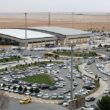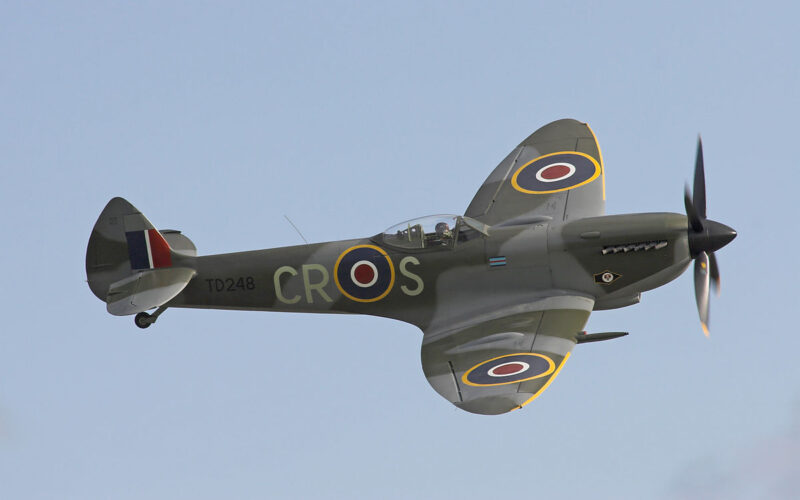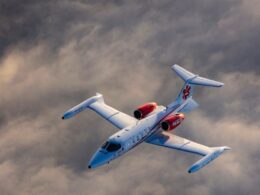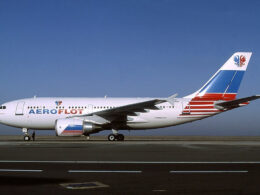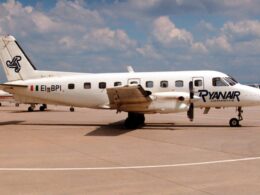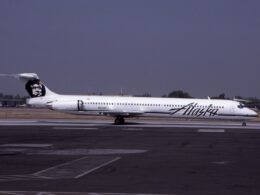The Supermarine Spitfire Took Flight 84 years ago
On this day in 1936, one of the most iconic fighters of all time took to the skies. The Supermarine Spitfire came to life.
A fighter which completely changed the outlook of the RAF (Royal Air Force) with its unique and innovative design and helped Britain achieving victory in the Battle Of Britain.
Subsequently, the Spitfire also conquered the hearts and minds of the British public. It became a symbol of the British war effort and the march towards victory over the Nazis in the skies of Europe.
To celebrate the magnificent fighter, we would like to present you with the Top 10 Facts About the Supermarine Spitfire!
1. The British public funded the Supermarine Spitfire
Well, to be fair, the British public partially funded the Spitfire. As the economy was still recovering from The Great Depression, Britain and the rest of the Allies wanted to avoid war at all costs. They simply could not afford another war effort, as the wounds were still healing from The Great War.
However, in 1940 the Battle of Britain started. The war came to the British soil and Britain desperately needed more fighters to counteract the bombing.
The British government set up a Spitfire fund. They put a price-tag of £5,000 for one Spitfire. This meant that if you donated £5,000, you basically donated a Spitfire to the RAF. Although the true price of the aircraft was much higher – about £13,000, the 5,000 had a nice ring to it. Compared to modern fighter jets, the price seems like just a bunch of change!
The RAF even published the price for every component of the fighter, just to appeal to the public more. And their efforts reaped in the rewards – in total the public raised about £13 million. Adjusted for inflation, that amount equals to about £650 million.
2. Britain produced over 20 thousand Spitfires
RAF says exactly 20,334. The second most-produced fighter aircraft by the Brits was the Hurricane – they built 14,533 Hurricane units.
It might be a reason why the Spitfire was so popular amongst the British public, as there was a lot of them in the skies.
The British government ended the production of the Spitfire in 1947, 12 years after it first touched the skies. Various sources state that there are more than 200 Spitfires are still intact. Around 50 are airworthy and are able to fly. Most of the Spitfires, airworthy or not, are stored all around the United Kingdom.
3. Unique Elliptical Wings
Not many aircraft have used elliptical wings throughout history.
And not many of them have seen the scale of production that the Spitfire saw. Although various fighters and bombers throughout World War Two used elliptical wings, they were in the minority.
While the platform that Supermarine used to build the wings for the Spitfire had its disadvantages, especially in production stages, ultimately it provided exceptional performance in the air. At high altitudes, the Spitfire crowned itself the King of the skies. The wing also provided excellent maneuverability for the fighter. Pilots that flew the fighter complimented it for being a very elegant and agile aircraft, capable of handling its rivals easily.
4. Its Engines Would Cut out
The early versions of the fighter had a weakness when it performed a steep dive down. As the pilot controlled the aircraft to go down, the dive would force fuel out of the carburetor. This resulted in the engine stalling and losing all power. Alongside that issue, if a pilot would perform a dive for too long, the engine and the fuel pump would become flooded with fuel. Because of this, the engine would not start again.
Subsequently, if a Spitfire pilot was chasing an enemy, he could simply enter a dive and escape the British fighter. German aircraft used a fuel injection system, thus they could dive as much as they want, as long as the pilots could handle it physically.
RAF and its pilots realized this was a big problem, as the Spitfire was crucial alongside the Hurricane to secure the airspace over the British islands.
In 1941, an engineer named Beatrice Shilling came up with the solution. While it did not fix the engine cutting out, it prevented fuel from flooding the engine. A year later, a pressure carburetor completely fixed the issue.
5. Its main rival was the Bf 109
While the Hurricane was busy dealing with the bombers that approached British soil, the RAF tasked Spitfire squadrons to deal with their escort – the Messerschmitt Bf 109 fighters.
The Luftwaffe believed their Bf’s would overcome the Spitfires easily. Apart from the major flaw mentioned above, the fighters were pretty much equal. These two would be constantly engaged in dogfights.
https://youtube.com/watch?v=ptJyCGNeNcE
However, the Royal Air Force and the Luftwaffe operated differently. Unlike its British counterpart, the Luftwaffe did not offer any rest rotations for its fighter pilots. Furthermore, RAF trained its new recruits very strictly. As the Luftwaffe suffered massive losses during the Battle of Britain, it simply could not keep up and replace its fighter squadrons quickly enough. This resulted in a lower quality of pilots that sat in the cockpits of the Bf 109.
This proved vital for the record of the Spitfire.
Ultimately, even after years of upgrades, historians and aviation experts regard these two as equal fighters, owing to the fact, that the Germans did not stop upgrading the Bf 109 as well.
6. V12 POWER
That’s right – a V12 engine powered the fighter. Produced by Rolls-Royce, the V12 engine, dubbed the Merlin paired with a Supermarine Spitfire put out 1030 hp. The Spitfire used either the Merlin II or Merlin III variants. Listen to it roar:
Later versions, specifically the Mk.XII, MK.XIV and the MK.21/22/24 used a Rolls-Royce Griffon engine. It was also a V12! Different to the Merlin engines, the Griffon produced over 2000 hp.
The same engine, that started out its life in 1937 (as the Merlin G or Merlin II) produced double the horsepower by the end of the war. However, it was in a different aircraft, namely the de Havilland Hornet. That fighter used the Merlin 130 and Merlin 131 variants. Both of those engines pumped out 2060 horsepower.
7. A lot of designs
Over the years, British manufacturer produced 24 different marks of the Supermarine Spitfire. In other words, there were 24 different versions of the fighter. Supermarine delivered the last Spitfire Mk. 24 with a Griffon 61 engine.
In addition to the upgrades to the regular Spitfire, Supermarine also produced fighters equipped with cameras. The manufacturer placed them in the wings in the early variants but later placed them in the fuselage in the MK.XI and MK.XIX.
Moreover, the British manufacturer also produced the Seafire, a modified version of the Spitfire. The Seafire was built so that the Royal Navy could operate the fighter from aircraft carriers.
8. ******* Love Cannons
(If you understood the reference, bonus points to you!)
The first few Spitfire variants carried 8 Browning machine guns equipped with .303 rounds. However, as the war progressed, pilots raised their concerns that the machine guns could not penetrate thick armor of bigger aircraft, such as bombers.
RAF realized that the guns were ineffective. Something needed to change.
Thus, RAF introduced two 20 mm cannons on the fighters. The cannons replaced 4 machine guns, meaning the Spitfire now carried 2 cannons and 4 machine guns. While the cannons encountered issues at first, they proved to be very potent and practical.
9. Beerfire
As Allied troops landed in Normandy on D-Day, supplies would have to follow. However, transferring supplies over the channel proved to be a logistical challenge.
The British had a very big upper hand in the skies. Also, various British breweries provided free beer to troops stationed in Britain.
So, we combine the two… And get Spitfires carrying Beer over the English Channel. The Supermarine Spitfire Mk.IX had pylons to carry bombs or fuel tanks. But instead of bombs or more fuel, the fighters carried beer kegs to the troops in Normandy.
The beerfires even had their own designation – Mod XXX.
Despite the British government stepping in and terminating the beer runs, unofficially they continued.
10. You can still fly one
Yes, you heard me right! You can still fly the iconic fighters. There are numerous flying centers offering us, regular plebeians, the chance to sit in a cockpit of the legendary Spitfire.
Prices usually start from £2.500 and can go way up to more than £10.000, depending on the offer you chose. Whatever the price might be – we can already tell you that it is worth it!
If you would like to truly pilot one, there is a flight academy in the United Kingdom that has a Spitfire Simulator.
To sum up, we thank every single pilot for flying the Supermarine Spitfire. Putting themselves in danger to protect the lives and goodwill of everyone around the world.
We thank the designer, R.J. Mitchell, who created this magnificent piece of design and engineering.
And hopefully, someday we will get a chance to fly on the wonderful piece that is the Spitfire.




